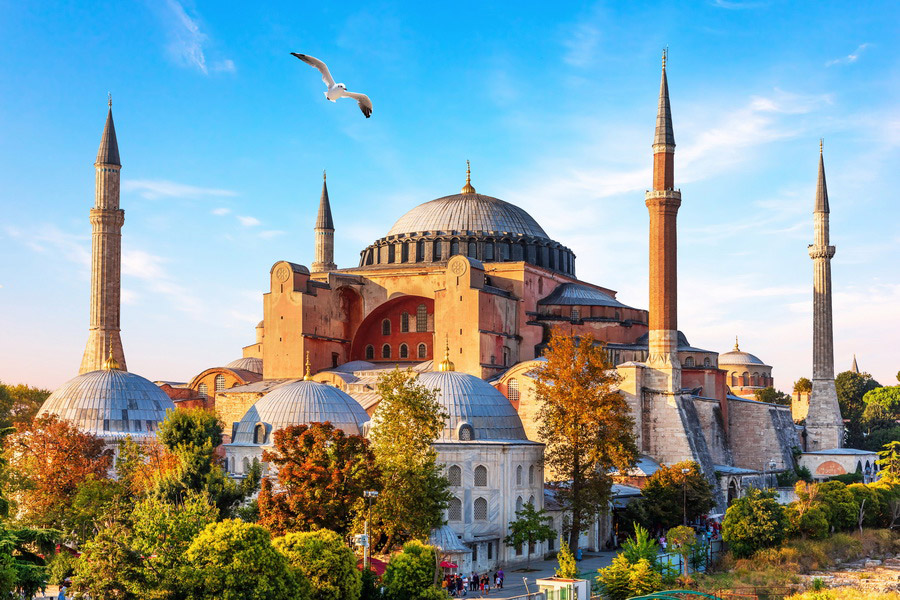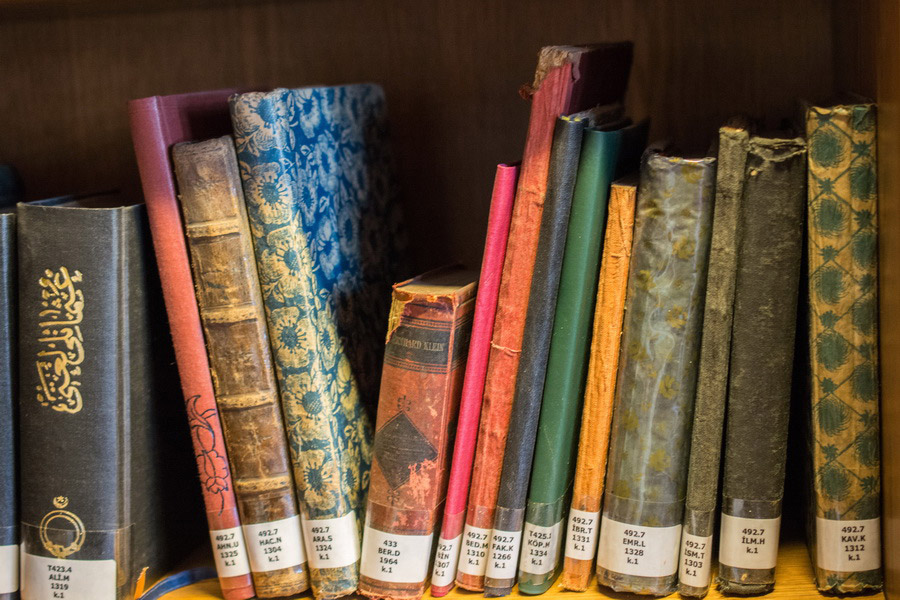Turkish Culture

Turkey (officially Türkiye) is a large country of great and multifarious interests. It has been influenced by its location at the crossroads of Europe and Asia and by Ottoman history and its people from the period of Seljuks until the foundation of the Republic of Turkey on October 29, 1923, and the first president Ataturk. The Turkish culture has also prospered under the country’s strong economy, enabling its promotion and distribution worldwide.
Turks are particularly proud of their country. It’s common to see the Turkish flag hanging off houses, business buildings, and houses. The national identity of many Turks is associated with the “father of the Turks,” Ataturk, because he was able to modernize their country and make it in tune with Europe.
Although cultural practices vary across the country, dance, music, cinema, architecture, religion, and literature are the major composites of the culture of 75% living in metropolitan areas in Turkey, offering an unmatched cultural base for everyone wishing to visit and understand contemporary Turkey.
Aspects of the Culture in Turkey
Below, we offer insights into the main facets of Turkish culture today, along with inspiring cultural expressions including paintings, music, dance, theater, and much more.
Music

Influenced by both Eastern and Western cultures, Turkish music today is of unbelievable diversity. Folk music uses complex improvisation and rhythms. The traditional instruments, such as the Saz, a long-necked lute, and the Ney, a reed flute, produce ear-pleasing and calming sounds. The famous folk artists in Turkey are Volkan Konak, Fuat Saka, Onur Akin, and Cenk Erdogan.
Increasingly common saz orchestra, accompanied by traditional instruments and arabesque melodies, attracts many listeners in Turkey.
Moreover, the Turkish music industry has produced a famous pop singer, Tarkan. Rhapsody even has rated him as a top artist in the history of pop music in Europe and charted in the US with his signature song “Simarik.”
Cinema
Cinema is a big part of modern Turkish culture today, which has been flourishing for many years as an entertainment source for locals. Turkish series, known as “dizis,” has gained immense popularity not only domestically but as well as internationally. The top-viewed Turkish series globally is a historical drama series depicting the life of Suleiman Magnificent and his era, featuring impressive production and narrating.
Among internationally acclaimed Turkish films are Dry Summer directed by Metin Erksan, The Road by Serof Goren, and Distant by Nuri Bilge. The most recent movies are Kedi, a documentary about a cat by Ceyda Torun (2016), Commitment (2019), a drama directed by Semih Kaplanoglu, Toprak (2020) by Sevgi Hirschhauser, and Brother’s Keeper, directed by Ferit Karahan (2021).
Dances

Turks love dancing, and their traditional dances are always an exciting spectacle for any tourist. Whether it is Halay, Horon, or Zeybek, you will enjoy watching beautiful costumes and choreography, which is always about rhyme and specific form.
While every region in Turkey has its own style, these dances are the heritage of previous generations and have great historical significance.
Theater

According to the 2022 statistics, Turkey has 2,366 theaters. This number is truly impressive, even though recent years in the country have been marked by political pressure and censorship on art.
The current landscape of Turkish theater is a blend of various theatrical forms, trends, and novice dramaturgical and narrative techniques featuring performance art, feminist theater, monodrama, storytelling, new interpretations of classical texts, and much more.
Theater lovers will find captivating performances in the main Turkish cities. Istanbul boasts a few dozen productions staged every evening.
Traditional Turkish theater encompasses theatrical performances, such as Karagoz (shadow theater), Meddah (performed by a single storyteller), puppet theater, stage magic, and Ortaoyunu. The latter is a folk play, the kind of Karagoz, with two main characters Kavuklu and Pisekar. Kavuklu is ignorant and confused and Pisekar is educated and able to discern between bad and good. The whole play evolves around the conflict between these two.
Turkish Art

The unique geographical location of Anatolia has made it possible for locals over the centuries to create and develop such visual representations as calligraphy, sculpture, and painting. Turkish fine art also encompasses traditional handicrafts like ceramics, earthenware, copper smithing, Cini tiles, weaving, woodworking, kneading, embroidery, and miniature art, among many others.
One can find craft shops almost everywhere in Turkey, and any tourist can learn traditional handiwork from locals.
A few Turkish artists, whose work is worth exploring are Gizem Saka, Haluk Akakce, Bedri Baykam, Seteny Ozbek, Bahadir Gokay, and Hayal Pozant.
Architecture

Turkish architecture covers periods of Seljuks, Byzantine, Ottoman, and contemporary. As a result, the country has a few architectural trends, sometimes contradicting each other. Even to the untrained eye, the Turkish architectural scene looks rather inharmonious and lacks continuity. But this is what exactly attracts and fascinates many tourists.
Visiting Hagia Sophia, Basilica Cistern, Yeni Cami Mosque, Eyup Sultan Mosque, Dolmabahce Palace, Beylerbey Palace, Sultanahmet Square, Apollon Temple, and others will give one a glimpse of the architectural diversity.
To appreciate the benefits of the modern architecture movement in Turkey, visit the Social Security Complex in Istanbul or the Dutch Embassy in Ankara, designed by famous architect Eldem. Another important name is Seyfi Arkan, a personal architect of Ataturk, who constructed the Bauhaus-style Florya Ataturk Marine Mansion, including a Glass Villa of the Cankaya Kosku.
Turkish Literature

The very first example of Turkish literature, Uygurt Turk poetry, discovered in classical Chinese records, traces back to 600 AD. The earliest poetry was always oral – these were Turkic verses of shamanistic and animistic culture often recited at religious ceremonies before and after hunting. This is the old period of Turkish literature.
Ottoman literature in the Turkish culture is seen as the Golden Age. Prose and especially poetry were very popular during this era. The Turkish written language embraced the Persian tradition gazel and another literature tradition derived from Persian through Arabic known as kaside. The written Ottoman Turkish language born from these influences was called Divan Literature. Prime examples of divan literature tradition are The Book of the Stranger by Asik Pasa (13th-14th centuries) and The Treatise of Counsel by Yunus Emre. A great deal of prose writing generally describes travel narratives, history, and tradition. The notable work, the Book of Travels, was written by Evliya Celebi. When the Ottoman Empire started to diminish at the beginning of the 19th century, political reforms gave rise to radical ideas in literature along with Western influence. In the second half of the 19th century, novels and short tales gained a new life through Turkish translation of French literature. From there on, Turkish authors enjoyed more freedom to express their ideas.
This paved the way for nationally driven literary movements, especially after the foundation of the Republic of Turkey.
One of the acclaimed Turkish novelists and the winner of the 2006 Nobel Prize in Literature is Ferit Orhan Pamuk. He has sold 13 million books in 63 languages.

